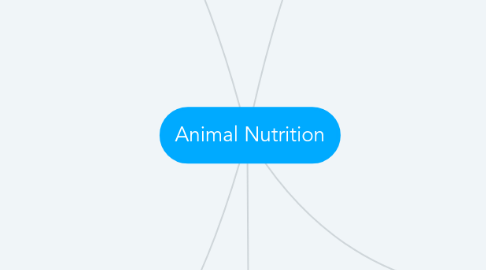
1. Nutrients and Functions
1.1. Carbohydrates~ Energy and fibre for the correct functioning on the rumen.
1.2. Proteins~ Growth and repair of cells, energy, milk and wool production.
1.3. Fats~ Insulation and Energy.
1.4. Vitamins~ Control of many metabolic processes.
1.5. Minerals~ Bone and teeth building, energy production, fertility and milk production.
1.6. Water~ Solvent, aids in temperature regulation and lactation.
2. Minerals Requirements in an Animals Diet
2.1. Macrominerals~ minerals required in large amounts. (Calcium and Magnesium)
2.1.1. Deficiencies in macrominerals can also lead to disease such as grass tetany and milk fever.
2.1.2. Deficiency in Calcium leads to milk fever.
2.1.3. Deficiency in Magnesium leads to grass tetany.
2.2. Microminerals~ Minerals required in small amounts. Can become toxic if consumed in large amounts. (Iron, Iodine, Copper, Cobalt and Zinc)
2.2.1. Deficiencies of microminerals such as selenium and copper are linked with infertile cattle.
2.2.2. Deficiency in Copper in pregnant ewes can lead to lambs being born with Swayback.
2.2.3. Deficiency in Cobalt can lead to pine disease in seep and lambs. Symptoms are the failure to thrive, poor fleece and poor appetite. Pine disease cause infertility.
3. Protein Requirements in Animal Diets
3.1. Cattle, sheep and pigs require many nutrients in order to maintain good health.
3.2. Animals nutrition can depend on the stage of their life cycle. Example young animal needs more protein than adults and lactating cows need more protein than dry animals
3.3. Protein is made up of 20 amino acids. In monogastric animals 10 of these are essential (lysine and Valine) as they can't be synthesised by the animal. The other 10 can be synthesised by the animal and are referred to as non-essential amino acids.
3.3.1. Essential amino acids~ cannot be manufactured in the monogastric animals body and must be maintained in their diet.
3.3.2. Non essential amino acids~ can be manufactured in the body by other amino acids.

